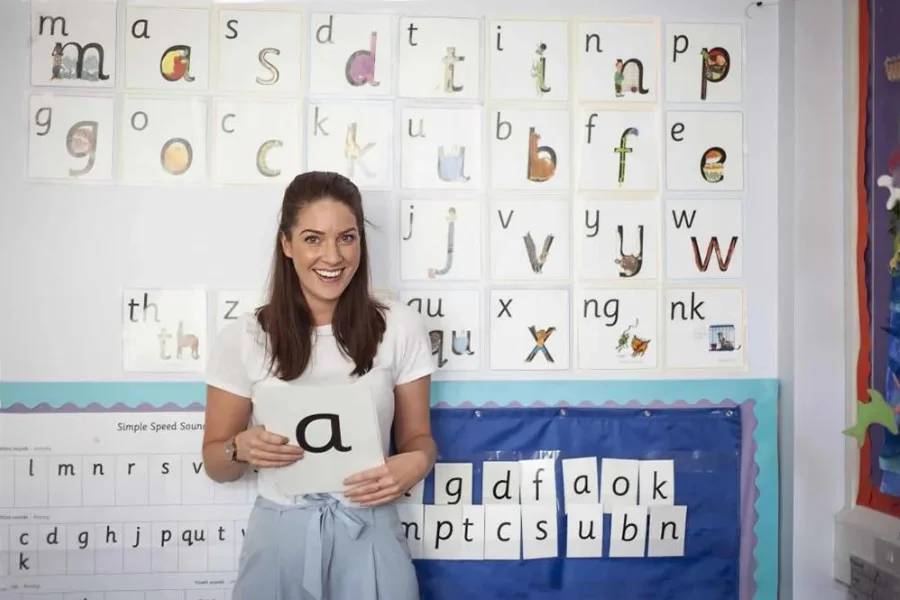
Source : ruthmiskin
The discussion between the Phonics Approach vs Whole Language has been a hot topic among teachers, parents, and scholars when it comes to teaching reading.. The Phonics Approach highlights the understanding of the correlations between alphabets and their respective sounds, building blocks to reading proficiency. On the other hand, Whole Language emphasizes recognizing whole words and using appropriate signs to understand written text, supporting a natural involvement in text.
These methods not only diverge in their essential principles but also impact students in unique ways, presenting different signs of growth, areas impacted, and necessary accommodations. Understanding the differences between the Phonics Approach vs Whole Language is essential for someone involved in the learning journey of a kid, offering visions into how each method addresses the development of reading skills. The choice between the Phonics Approach vs Whole Language can meaningfully influence teaching strategies and learning outcomes, making it crucial to consider the specific needs and skills of each student.

Source : readingeggs
Foundation and Focus
Phonics Approach
The Foundation and Focus of this method are grounded in the explicit teaching of the relationship between letters and sounds. It systematically introduces learners to the alphabet, phonemic awareness, and the rules that govern the combination of letters to form words. For example, students learn that the letter combination “ch” produces a unique sound as in “check.”
Whole Language
In contrast, the Whole Language approach treats language as a whole entity, emphasizing meaning and the use of language in context. It encourages immersion in rich literary environments where students learn to read through exposure to complete texts, prioritizing comprehension and the joy of reading.
For more details on the Phonics Course, Call / Whatsapp at +919869866277 / +919869546913.
Click Here, to download the Phonics Course brochure!
Teaching Strategies
Phonics Approach
Utilizes a sequential, step-by-step instructional path. Teachers introduce sounds individually, blending them into syllables and words. Teaching Strategies in this method often involve drills, phonics games, and worksheets to practice specific phonetic principles.
Whole Language
Highlights learning through experiences with whole scripts, like stories, poems, and informational texts. The approach emphasizes natural learning through reading and writing activities that are significant and engaging to the learner.

Source : phonicspower
Reading Development
Phonics Approach
Supporters argue that phonics builds a strong base in reading by allowing learners to decode new words using their information of phonetic rules. This method aims to prepare learners with the devices to read freely and confidently.
Whole Language
Proponents believe that exposure to whole texts from the beginning fosters a love for reading and a natural acquisition of literacy skills. They argue that this approach leads to better comprehension and Reading Development because it focuses on meaning from the start.
Word Recognition
Phonics Approach
Teaches Word Recognition through decoding. Students learn Word Recognition by sounding out words based on phonetic rules, which is especially advantageous for reading unknown words.
Whole Language
Focuses on sight recognition of words. Students learn Word Recognition by recognizing words as whole units, relying on contextual hints and prior knowledge to identify new words.
Role of Phonics
Phonics Approach
The Role of Phonics is significant. With an enormous emphasis on phonemic recognition, the Phonics Approach is considered the building block for reading skill development.
Whole Language
The Role of Phonics is less prominent. Phonics is integrated into reading as one of many strategies, without systematic instruction or emphasis.
Approach to Spelling
Phonics Approach
Teaching Approach to Spelling is through phonics rules, helping students understand how sounds are represented by letters. Spelling instruction is systematic and explicit, often paralleling reading instruction.
Whole Language
Teaching Approach to Spelling is through exposure and practice within the context of writing and reading. Mistakes are considered new opportunities for learning rather than errors to be rectified immediately.
Writing Instruction
Phonics Approach
Writing instruction is closely linked to phonics knowledge. Students learn to encode words by breaking them down into their respective sounds and matching those sounds to letters.
Whole Language
Writing Instruction is approached in the form of self-expression and communication. Students are motivated to write freely, focusing on content and message over spelling and grammar in the early stages.
Assessment Methods
Phonics Approach
It often focuses on phonetic proficiency, decoding capabilities, and the appropriate application of comprehended rules. Assessment Methods include word lists, decoding exercises, spelling tests, etc.
Whole Language
Assessments are more holistic, often incorporating reading comprehension, writing assignments, and projects that reflect students’ understanding of texts in a broad context.
Learner Engagement
Phonics Approach
Learner Engagement is through structured activities, games, and lessons that focus on phonetic rules and decoding skills.
Whole Language
Learner Engagement comes from interacting with meaningful texts, discussions about stories, and writing activities that connect to students’ lives and interests.
Educational Philosophy
Phonics Approach
It is based on the Educational Philosophy that reading is a skill that can be developed by breaking it down into smaller, teachable components. It thus emphasizes the significance of a robust foundation in the mechanics of reading.
Whole Language
Views reading and writing as natural processes that develop best through immersion and interaction with text. It emphasizes the importance of context, meaning, and the integrative nature of language skills.
In the Phonics Approach vs Whole Language dispute, it is clear that both approaches offer unique benefits and provide different learning styles and needs. The best informative path may not be selecting one over the other but finding a balanced method that incorporates the strengths of both, structured to the separate student. Understanding these differences in the Phonics Approach vs Whole Language is essential for teachers and parents as they guide kids on their voyage to becoming skilled readers and writers.
For more details on the Phonics Course, Call / Whatsapp on +919869866277 / +919869546913.
Click Here, to download the Phonics Course brochure!
Phonics Teacher Training Course
The Phonics Teacher Training Course, a comprehensive program offered by Vidhyanidhi Education Society (a government-acknowledged institute), trains educators with the skills needed for effective phonics teaching. This 18-hour intensive Phonics Teacher Training Course covers all elements of phonics teaching, including acquaintance with the Phonics Approach vs Whole Language. This Phonics Course, based on the UK-based Synthetic Phonics Teaching and Learning Methodology, is a proven technique that contrasts with the whole language method by emphasizing the understanding and application of letter sounds in reading and spelling.
Key features of the Phonics Teacher Training Course include:
18 hours of intensive training
This Phonics Teacher Training Course duration is packed with detailed sessions aimed at imparting a deeper understanding of the Phonics Approach vs Whole Language, phonics principles, and techniques.
UK-based Synthetic Phonics Teaching Methodology
This approach is renowned for its effectiveness in improving reading and spelling abilities, offering a systematic way for children to learn phonics, distinguishing it significantly from the whole language approach.
Use of audio-visual teaching aids
These modern educational tools enhance the learning experience, making complex concepts like the Phonics Approach vs Whole Language, more accessible and engaging for trainees.
Demonstration of sounds with jingles, tales, and actions
This creative method helps in cementing the 42 sounds (including letter sounds and digraphs) in learners’ minds, making the phonics approach more appealing compared to the whole language method.
Extensive Practice of all 42 Sounds
Extensive practice sessions ensure that participants gain confidence in teaching both letter sounds and digraphs, crucial for reading and spelling.
Mock drills and Doubt-Solving sessions
These components of the Phonics Teacher Training Course are designed to test understanding and clarify any questions, ensuring readiness to apply the phonics approach effectively in contrast to the whole language methodology.
Question-Answer sessions
This Phonics Course provides an opportunity for participants to address specific concerns, enhancing their ability to implement phonics teaching strategies effectively.
The Phonics Teacher Training Course by Vidhyanidhi Education Society (Govt. regd.) stands out as an essential program for educators seeking to understand the Phonics Approach vs Whole Language and master Phonics, providing them with a solid foundation to support their students’ reading and writing skills in a way that the whole language method does not. With its focus on active learning through audio-visual aids, practical demonstrations, and interactive sessions, this Phonics Course prepares teachers to make a significant impact in the early stages of child literacy development.
Master reading with Vidhyanidhi’s course on Phonics Approach vs Whole Language now!
For more details on the Phonics Course, Call / Whatsapp on +919869866277 / +919869546913.
Click Here, to download the Phonics Course brochure!
Phonics Approach vs Whole Language
FAQs
What is the Meaning of Phonics?
Phonics is an instruction method that exploits the correlation between letters and sounds to assist learners in interpreting words for reading and spelling.
What Makes a Good Phonics Teacher?
A good phonics teacher is patient, creative, knowledgeable about language sounds, and skilled in engaging students through interactive lessons.
Which is Best Phonics Courses for Teachers?
The best phonics course for teachers is offered by Vidhyanidhi Education Society, known for its comprehensive curriculum and practical teaching methods.



